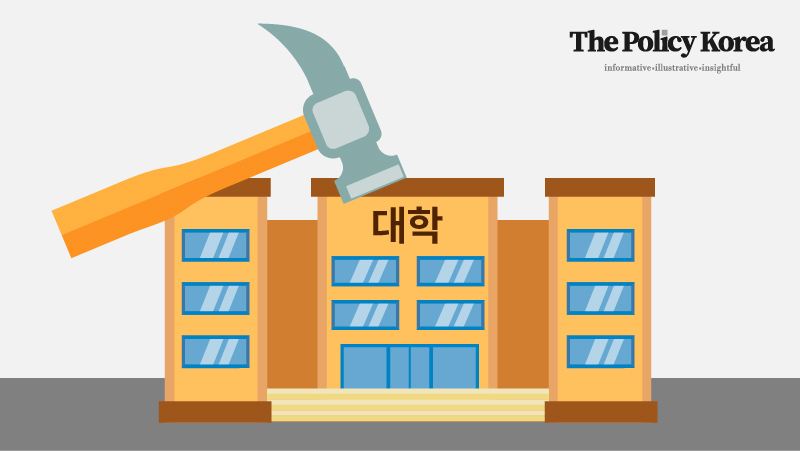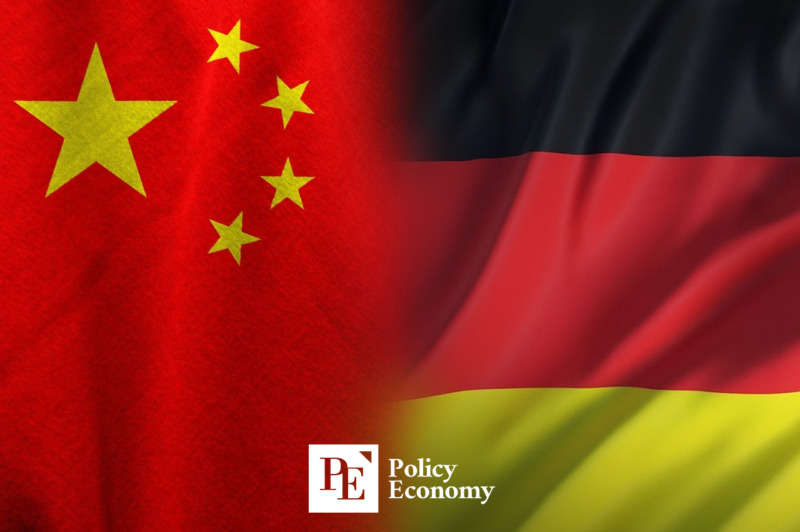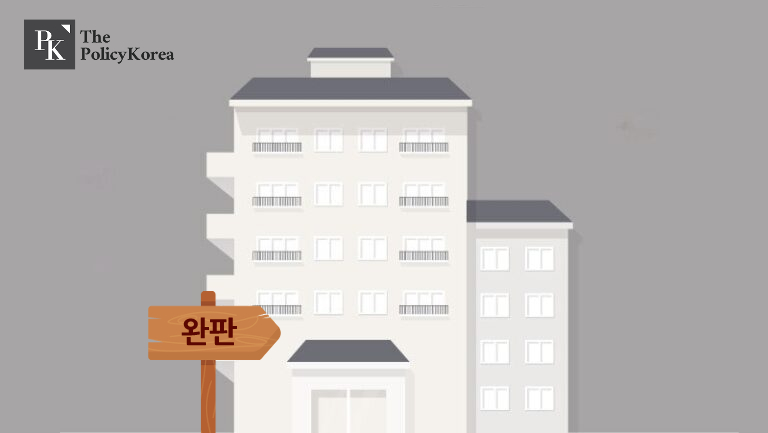[동아시아포럼] 中 부동산 위기, 고도 성장 신화의 끝일까?
오랜기간 신용에 기반 투자주도형 성장, 부동산 침체로 위기 맞아 레버리지 높고 투기 부추기는 부동산 투자, 구조조정 필요성 제기 '3대 레드라인' 등 부동산 시장의 잠재적 리스크 관리정책 추진
[동아시아포럼]은 EAST ASIA FORUM에서 전하는 동아시아 정책 동향을 담았습니다. EAST ASIA FORUM은 오스트레일리아 국립대학교(Australia National University) 크로퍼드 공공정책대학(Crawford School of Public Policy) 산하의 공공정책과 관련된 정치, 경제, 비즈니스, 법률, 안보, 국제관계에 대한 연구·분석 플랫폼입니다. 저희 폴리시코리아(The Policy Korea)와 영어 원문 공개 조건으로 콘텐츠 제휴가 진행 중입니다.
불과 얼마 전까지만 해도 중국의 경이로운 경제 성장을 두고 논쟁이 있었지만 이제는 전문가들 사이에서 ‘중국의 기적’에 대해 종말을 예상하는 새로운 합의가 형성되고 있다. 전문가들은 중국 경기침체의 진앙지로 부동산 위기를 꼽는다. 오랜기간 신용에 기반한 투자주도형 성장모델을 유지해 오면서 부동산 시장의 침체가 경기위축으로 이어졌다는 지적이다. 그러나 이런 전망과 달리 최근 중국 부동산 시장의 회복세가 다시금 탄력을 받고 있어 관심이 쏠린다.

실질 성장률 5.2% 증가에도 부동산 투자는 9.3% 감소
올해 1~3분기 중국의 실질 GDP(국내총생산) 성장률은 전년 동기 대비 5.2%를 증가했다. 2023년 10월 태양전지, 서비스 로봇, 집적회로 누적 생산량은 각각 전년 동월 대비 62.8%, 59.1%, 34.5% 증가했다. 올해 10월 기준으로 인프라와 제조업 부문 투자는 각각 5.9%와 6.2% 증가하면서 부동산 부문 투자의 9.3% 감소분을 상쇄했다. 부동산 부문을 제외한 민간 투자는 9.1% 증가했다.
소비도 강한 반등세를 보였다. 글로벌 수요 감소와 탈세계화 추세가 영향을 미치면서 지난 10월 수출은 전년 동월 대비 6.4% 감소했다. 하지만 수출이 6개월 연속 감소세를 보이는 상황에도 자동차 부문 수출은 올해 말까지 400만 대를 돌파할 것으로 보인다. 이는 중국 산업이 밸류체인의 상위로 업그레이드되고 있음을 의미한다.
이러한 상황에서 부동산 문제가 경제 회복의 발목을 잡았다. 개발, 투자 등 부동산을 중심으로 한 일련의 경제 활동은 중국 GDP의 1/4를 차지하는데, 최근 부동산 위기로 촉발된 경기침체에 대한 우려가 확대되면서 레버리지가 높고 투기를 부추기는 부동산 부문에 대해 구조조정이 필요하다는 주장이 끊이지 않았다. 이에 중국 정부는 ‘3대 레드라인(three red lines)’를 도입했다. 2020년 8월 도입된 3대 레드라인은 중국 인민은행 등이 부동산 개발사 대출 시 적용하는 기준으로 자산부채비율이 70%를 넘지 않고 순부채율이 100%를 넘지 않으며 현금성 자산과 단기부채비율이 1보다 커야 한다는 세 가지 지표로, 현재의 주택시장 둔화는 의도된 정책적 선택으로 볼 수 있다.
현재 부동산 개발사에 대한 은행권의 직접금융은 총 대출 잔액의 2.5~3%에 불과하다. 주택 관련 부채 80%의 채무자는 실 주택 구매자로 주택담보대출의 역사적 부도율(historical defalut rate)도 0.5% 수준이다. 중국의 부동산 시장은 지난 2008년 미국 서브프라임 사태 때와 달리 대규모 서브프라임 대출이나 금융자유화를 경험하지 않았다. 또한 부동산 가격이 정부에 의해 모니터링되고 있어 주택가격 하락도 제한적이다. 부동산 시장의 부채 상당 부분이 국내의 위안화 표시 부채기 때문에 중국 인민은행과 국유자산 관리회사가 필요할 때 유동성이나 자본을 공급해 은행을 지원할 수도 있다. 이러한 상황에서 3대 레드라인이 도입된 만큼 투자자와 채권자에게 손실이 발생할 수 있겠지만 재정적 리스크는 억제될 가능성이 높다.
이런 가운데 현재 중국의 부동산 시장이 회복의 조짐을 보이고 있다. 올해 부동산 부문 자산 대비 부채는 전년 대비 1조7,000억 위안(약 289조원) 감소했는데 이는 GDP의 1.4% 수준이다. 또한 부동산 부문의 공급과 수요도 안정될 것으로 예상된다. 주택공급 측면에서는 주택을 완공하기 위해 부동산 개발사에 선별적으로 신용을 공급하고 있고, 수요 측면에서는 구매자에게 2~3주택자에 대한 계약금 규제 완화, 모기지 금리 인하, 새로운 부동산 판매세 환급 등의 인센티브를 제공하고 있다.
新 성장동력 모색, 가계소비 늘리고 재정지원 강화해야
다만 장기적으로 중국의 부동산 시장은 도시화와 인구 증가 둔화로 인해 예전의 모습을 되찾는 데 오랜 시간이 걸릴 가능성이 있다. 가장 시급한 문제는 부동산 부문에 대한 대규모 투자를 대체할 수 있는 성장동력을 찾는 것이다. 중국은 현재 신재생에너지 자동차, 인공지능, 5G 등 여러 기술산업을 선도하고 있다. 그런 만큼 추후 연구개발(R&D)에 대한 투자를 지속적으로 확대함으로써 생산성 중심의 성장을 이뤄내야 한다. 앞으로 부동산 부문의 투자가 감소하고 산업 부문으로 신용이 집중되면 생산성 제고와 혁신을 위한 자금 조달이 확대될 것으로 보인다.
가계소비도 계속 늘려야 한다. 지난 10년간의 최종소비지출은 경제성장률의 57%를 차지했지만 최근 코로나19와 부동산 시장 구조조정으로 인해 소비 수요가 감소했다. 가계소비를 촉진하기 위해 중국은 민간 부문에서 더 많은 양질의 일자리를 창출해야 한다. 앞서 올해 7월 중국 공산당 중앙위원회는 기업에 대한 재정적 지원과 시장접근성 제고를 통해 민간 경제의 성장을 촉진하기 위한 31개 조항을 발표한 바 있다. 그러나 여기서 그칠 게 아니라 이와 함께 지역의 일자리 창출과 청년 고용 촉진을 위해 일자리 프로그램을 시행해야 한다. 중국 정부가 민간 부문의 수요에 부응하는 기술교육을 제공함으로써 실업률을 개선하고 수요 기업들의 신뢰를 강화할 수 있을 것으로 전망된다.
지방정부에 대한 재정 지원도 강화해야 한다. 중국 경제의 안정화에 중요한 역할을 하는 지방정부가 최근 경기침체와 토지 매각 제한, 심각한 부채로 어려움을 겪고 있기 때문이다. 최근 중앙정부가 지방정부에 대한 재정 이전을 위해 1조원 규모의 중앙정부채를 발행한 것은 좋은 시도지만 앞으로 그 규모를 대폭 확대할 필요가 있다. 현재 중국 경제가 많은 도전에 직면해 있는 것은 사실이다. 하지만 여전히 성장하고 있으며 중국 정부는 경제 규모를 끌어올릴 수 있는 다양한 정책 수단을 보유하고 있다. 지금 당장 ‘중국의 붕괴’를 논하기에는 시기상조라는 의미다.
원문의 저자는 얀 량(Yan Liang) 오리건주 빌라메트 대학교(Willamette University) 경제학과 교수입니다.

Defying the ‘end of China miracle’ myth
While pundits not long ago were debating China’s rise, the emerging consensus is now heralding an end to the ‘China miracle’. China’s old model of credit-fuelled, investment-driven growth has been severely undercut by the real estate crisis, as well as weak consumption and export demand. But recent data suggests that recovery has regained momentum.

China’s real GDP growth rate in the first three quarters of 2023 reached 5.2 per cent year-on-year. Solar cell, service robots and integrated circuits production increased by 62.8 per cent, 59.1 per cent and 34.5 per cent respectively in October 2023. Infrastructure and manufacturing investments expanded by 5.9 per cent and 6.2 per cent in the first ten months, offsetting the 9.3 per cent contraction in real estate investment. Outside of the real estate sector, private investment grew by 9.1 per cent.
Consumption also saw a strong rebound, though exports fell by 6.4 per cent year-on-year in October 2023, marking a six-month consecutive decline in line with weak global demand and the trend towards deglobalisation. Still, China’s automobile exports will likely exceed four million units by the end of 2023 — a milestone in China’s industrial upgrading and its move towards the higher end of the value-added chain.
The real estate crisis has raised concerns about the Chinese economy, revealing the necessity of restructuring the highly leveraged and speculation-fuelled property sector. Beijing’s 2020 ‘three red lines’ policy aimed to accomplish this, with the current slowdown in the housing sector a deliberate policy choice.
While this adjustment will produce financial losses for investors and creditors, the financial risks will likely be contained for four reasons. First, direct bank financing for real estate developers accounts for 2.5–3 per cent of total bank loan balances, home buyers account for 80 per cent of housing related debt and the historical default rate for mortgages is only 0.5 per cent. Second, real estate prices are monitored by the government and housing price decline has been limited.
Third, unlike Japan in the 1980s, Chinese companies have not extensively used real estate as collaterals and unlike the 2008 US subprime mortgage crisis, China’s real estate industry has not experienced large-scale subprime lending or financialisation. Finally, as a large proportion of the real estate industry’s debt is domestic debt in renminbi, the People’s Bank of China and state-owned asset management companies can provide necessary liquidity or capital to support banks when needed.
The real estate sector’s balance sheet has shrunk by 1.7 trillion yuan (US$240 billion) — a mere 1.4 per cent of GDP. It is unlikely that the real estate sector will trigger a widespread financial crisis.
Going forward, the real estate sector will stabilise thanks to both supply and demand side policies. On the supply side, credit is selectively being directed to real estate developers to complete unfinished housing projects. On the demand side, recent relaxations in down payment for second or third properties, reduced mortgage rates, and a new property sales tax rebate are incentivising home buyers.
But the real estate sector will remain subdued due to slowing urbanisation and population growth. The challenge is to find alternative growth engines to replace the outsized investment in the real estate sector.
China must continue to invest in research and development and produce productivity-driven growth. China is now leading in many strategic technologies, such as new energy vehicles, artificial intelligence and 5G. As investment in the real estate sector falls, credit has been directed to the industrial sector to continue financing industrial production and innovation.
China must also continue to boost household consumption. Final consumption expenditure has contributed to 57 per cent of GDP growth in the past decade, though COVID-19 and property market readjustments have dampened consumption demand.
To encourage household consumption, China first needs to provide conditions for the private sector to create more jobs and raise wages. The Central Committee’s July 2023 31 Point Plan to promote the private economy’s growth may reassure entrepreneurs that the government will continue to provide them with financial resources and market access.
The central government should roll out a job guarantee program where jobs are created at the local level and funded by the central government. These jobs could hire youth and provide skills training to meet private sector demand, transitioning participants into private jobs when available. This will alleviate youth unemployment and bolster consumer confidence as income is secured.
The central government should also enhance financing support for local governments. While local government spending plays an important role in economic stabilisation, they continue to struggle with crippling debt due to the economic slowdown and limited land sales. The central government should consider significantly raising fiscal transfers to local governments to enhance their ability to spend counter-cyclically and manage debt. The recent issuance of one trillion central government bonds for fiscal transfers to local governments is a good first step, but the magnitude needs to be much larger.
Despite facing various challenges, China’s economy is still growing steadily and the government has multiple policy tools to guide and support the economy. It is premature at best to fan the flames of a ‘collapsing China’ narrative.



























